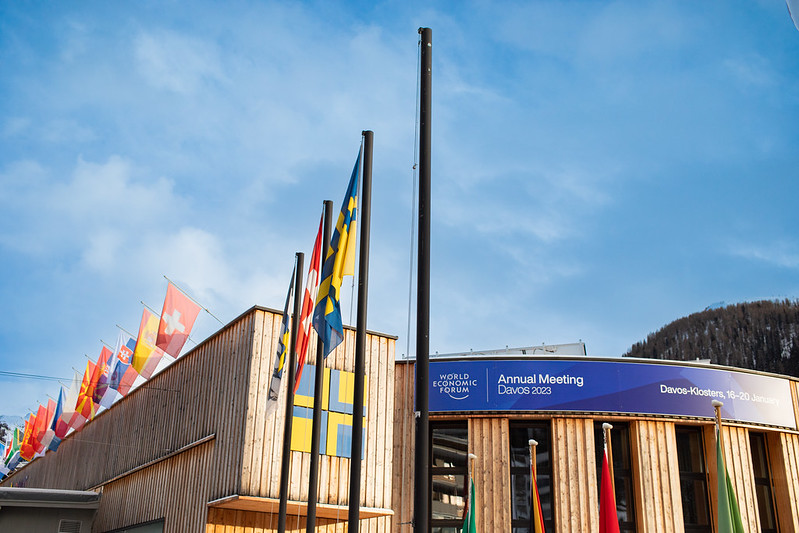PRovoke Media 03 Feb 2020 // 8:35AM GMT

Crisis Review landing page (Parts 1-3) here
14. Uber loses its London licence…again
Uber was already one of the growing number of digital-era brands that its customers rely on and use on a regular basis, yet frequently find frustrating and don’t always have much fondness for, when it was stripped of its London licence for a second time in November 2019.
On top of ongoing, worldwide concerns about the safety of Uber users, a glitch in the back end of its system in its biggest European market led to a security lapse resulting in at least 14,000 trips during 2018 and early 2019 – involving 43 drivers – where someone other than the booked driver picked up passengers. The ride-hailing service continues to operate in London while it appeals, but Transport for London, which oversees all public transport in the capital, was unequivocal in its criticism, saying it did “not have confidence that similar issues will not reoccur in the future, which has led it to conclude that the company is not fit and proper at this time.” The effect on Uber’s share price was immediate – with a 6% drop when trading opened in New York on the same day – but not long-lasting.
Uber has never been known for taking criticism of its behaviour – however flaky its legality or ethics – with any measure of contrition, let alone apology. Its response on this occasion was typically bullish, with regional general manager Jamie Heywood saying the decision was “extraordinary and wrong” and chief executive Dara Khosrowshahi echoing that it was “wrong” in a tweet.
However many regional authorities Uber continues to rub up the wrong way, don’t bet on it doing any permanent damage to the firm. The London situation is just the latest in a string of crises that Uber has faced and survived over the past few years, from sexual harassment scandals to fights with regulators and its own drivers. The problems are apparently non-stop: the company, along with rival Lyft, is also affected by the recent ban on curbside pickups by Los Angeles International airport, and has been accused of adding “significantly” to pollution across European cities.
As the Guardian’s technology editor Alex Hern said in his analysis of Uber’s reputation a couple of years ago: “Uber has entered that rarified portion of the market, alongside companies like Ryanair and Sports Direct, where unpleasantness is now an assumed part of the brand.” While most brands are recalibrating to try and be their best selves in society, Uber’s response to these latest issues shows that it has little desire to evolve in that direction. The company is quite literally the opposite of purpose-driven.— MPS
15. Thomas Cook collapses
After 178 years in business, you might have thought UK travel firm Thomas Cook was as solid as it gets, but its collapse in September 2019, leaving 150,000 travelers stranded, proved that a perfect storm can bring down even the most venerable of corporations.
Thomas Cook blamed Brexit, a weak pound, the weather, stiff competition from online travel agents and even negative media coverage for its demise. But it had been in trouble for a while. In 2011 its debt was spiralling, and it relied on a bail-out package from investors to keep it going. But a few years later it was back in the same position. Weeks before it collapsed, CEO Peter Fankhauser announced a £750 million rescue deal that he said was ‘good news’ for customers, employees and shareholders. But the banks disagreed, saying it was £200 million short of what was needed. None of this points to great financial management.
Kate Hartley, co-founder of social media crisis simulation company Polpeo, said two things stand out in the fiasco: “The first is that the travel firm was still selling holidays up to midnight of the day before it ceased trading. At best, that means it was in denial about what was about to happen; at worst it was recklessly irresponsible. The second is that Thomas Cook was still paying out dividends to investors in November of 2018 – ten months before its collapse – even though it had suffered disastrous sales that summer, had issued a profits warning, and the board was already starting to think about selling off the airline to raise funds.”
Hartley says the management issues were compounded by poor communication: “Once a company goes under, you can understand that – who’s left to communicate? But there were stories of staff finding out they’d lost their jobs from the media, from messages posted to doorways, even from Facebook. Fankhauser’s own communication wasn’t great either. Although he did express regret and apologise to customers, he didn’t take direct responsibility for the company’s collapse, blaming the failed bail-out.”
Again, Fankhauser has form here. In 2015 the company came under fire for the way it handled the deaths of two children while they were on holiday in Corfu. The company initially refused to apologise to the family; he said at the time: “I feel so thoroughly, from the deepest of my heart, sorry, but there’s no need to apologise because there was no wrongdoing by Thomas Cook.”
Thomas Cook’s collapse was a grim ending for company that didn’t quite make its 200th birthday. “Being a household name – even being a brand loved by millions – doesn’t compensate for poor leadership and failure to adapt to market conditions,” says Hartley. — MPS
16. Jet Airways goes out of business
After 26 years, one of India's largest airlines went out of business when Jet Airways unceremoniously ran out of cash. It was a chastening end of an airline that had pioneered private sector travel in India in 1993, after the country liberalised its economy.
But the onset of heavy competition in India's airline sector, particularly from low-cost carriers, posed an existential challenge for Jet — even though it still accounted for 20% of all passengers flown by Indian airlines as recently as 2018. With oil prices rising, Jet began to miss payments to staff and creditors, before grounding planes in a further bid to save money.
Eventually, a planned bank bailout collapsed, leaving Jet with no options left. "This was a ticking bomb that employees and customers alike were anticipating but certainly not in the way it actually happened," says Promise Foundation CEO Amith Prabhu. "It was sudden. And wiped out an entire brand overnight. Thousands were rendered jobless and several thousand more were stranded because the airline was indefinitely suspended. This point of no return was arrived at by a potent mix of financial mismanagement by the promoters and the crazy bloodbath that has taken place in the Indian skies ever since the advent of the low cost carriers in the last decade.
"The fallout has been severe and there are still hundreds of former Jet Airways employees looking for jobs. This is one of the worst brand crises in global aviation and certainly the biggest corporate tragedy of India in 2019."
In PR terms, furthermore, Jet's travails indicate the problems for companies that have no-one left to speak for them or, just as pertinently, for employees and customers. "The entire episode was badly managed," says Prabhu. "There were three leaders who were around for a bit. But soon they all resigned. It was like a pack of cards falling. The CHRO, the CFO and the CEO moved on. The communication team had crumbled. Everyone had to fend for themselves. There was no one to stand up for the brand." — AS
17. Gillette takes on toxic masculinity
The past few years have seen a flurry of crises created by bad advertising decisions. The original (and still, for many people, the worst) was the 2017 Pepsi ad, featuring model Kendal Jenner and addressing social justice issues (perhaps?). Last year saw H&M take its place in our crisis review with an ad depicting a black child in a “coolest monkey in the jungle” shirt.
In January, it looked as though Gillette would join the roster, when a Super Bowl ad that took the brand’s “the best a man can get” slogan and changed it to “the best a man can be” in an attempt to address the #metoo movement and associated issues around toxic masculinity. The ad promoted a swift backlash from the right, including calls for a boycott.
Was Gillette’s ad “toxic,” as Charles Taylor, professor of marketing at the Villanova School of Business suggested in a Forbes column? Was it the year’s “worst marketing move” as Mark Ritson argued at Marketing Week? Was it one of “the biggest PR disasters of 2019,” as claimed elsewhere?
Or was it, in fact, an example of a new phenomenon (or at least a new portmanteau): a 'nontroversy', which is to say, an event that prompted loud howls of protest from a handful of politically-motivated media types?
The data suggest it was the latter. Even the harshest analysis suggests the ad had zero impact on Gillette sales. And research conducted in the ad’s wake found it was not nearly as polarizing as the media coverage suggested: 61% of viewers gave it high marks, just 17% rated it low.
Perhaps the metric we should use for ad-driven controversies should focus on whether the ad seems to align with brand values. The Gillette ad clearly did (it also led to a dramatic uptick in the number of people who thought the company shared their values) in a way that the Pepsi and H&M ad clearly did not. — PH
18. Credit Suisse spies on its own people
Swiss banks are not exactly famous for seeking out the glare of publicity, so last year was clearly not a good one for Zurich-based Credit Suisse, which has attracted the wrong kind of attention in recent years.
In 2017, the bank was forced to abandon plans for a public listing of its Swiss operations, after paying billions to settle with the US government over its role in the mortgage scandal. In June of last year, the company drew negative headlines for suing the UK tax authorities in an attempt to recover millions of pounds it paid during the former Labour government’s drive to tax bankers’ bonuses after the financial crisis.
And then, in October, Credit Suisse fired its chief operating officer, Pierre-Olivier Bouée, over his role in a “James Bond-style corporate espionage scandal” involving private detectives following a senior executive through the streets of Zurich after an argument with the bank’s CEO, Tidjane Thiam, at a cocktail party.
The ramifications of that incident rumble on, with reports in recent days suggesting that the “debacle risks tipping the bank into a crisis that could engulf its top executives.”
One significant outcome was that the bank restructured its 60-person corporate communications team, which had reported to human resources chief Peter Goerke. The team is now aligned with the investor relations function, led by Adam Gishen—a move seen as an acknowledgement of the bank’s “public missteps.”
But when a company experiences so many negative headlines in such a short period of time, it is nearly always an indication of deeper cultural problems—and those rarely originate in the corporate communications department. — PH
19. Eskom's problems go from bad to worse
Power outages have become part of daily life for South Africans, and the latest scandals to hit ailing power firm Eskom aren’t making things any easier. In December 2019, two former managers were arrested for alleged corruption and fraud worth more than $50 million, with prosecutors saying an investigation had revealed "gross manipulation" of contracts for the construction of two new power stations.
The company’s response was suitably lawyerly, with a statement saying: "Eskom continues to work with law enforcement agencies to root out corruption and malfeasance,” and the firm promising it would "leave no stone unturned” in ensuring that perpetrators were brought to book.
But the problem wasn’t that this crisis was badly handled, it wasn’t that it wasn’t the first, or even second, time Eskom hit the headlines for the wrong reasons in 2019. The same week as the arrest, after the country's biggest power outage in more than a decade, the state-owned firm had to implement far-reaching planned blackouts to prevent total collapse of the power grid after heavy rains flooded mines and power stations.
This followed a similar situation in February, when South African homes, offices and businesses had a disruptive week of daily power cuts due to Eskom failing to maintain its crumbling power stations, which led to a public outcry and warnings from Eskom that it could run out of money.
The company – one of the biggest power utilities in the world, providing 90% of supply in South Africa from coal – has faced a string of corruption and mismanagement crises, which have contributed to enormous debt of around $30 billion.
Dustin Chick, who heads M&CSaatchi's new PR offer in South Africa, Razor, says Eskom's "serial offending" has affected its reputation: "Its narrative has become deeply untrusted. For some time 'load shedding' or 'rolling black outs' have been blamed on routine maintenance needs, however South Africans are now being told that this didn’t necessarily happen and the current round of power failures are as a result of poor maintenance regimes. My fear is that much of the comms has been spin, and in reality spin is just a fancy word for a lie."
Chick adds: "The time for statements is over. The greatest degree of impact on Eskom’s reputation will only come from changing its behaviours, not from its communications. With this, the role of communications has fundamentally shifted. In positioning the new CEO, or unpacking a new strategy communications teams will need to lead and heavily counsel the business into what actions it must undertake to enable a positive reputation. Only from there can communications create impact. Communications must lead the charge from words to actions."
It seems certain that Eskom’s spiralling management, maintenance and money problems will continue until the inevitable total collapse. There’s just no way of communicating your way out of a crisis this systemic, but the real losers are the people of South Africa. — MPS
20. Airbnb's nationwide scam
It’s been a tough run for Airbnb. First, there was the headline guaranteed to be a viral sensation: “I Accidentally Uncovered a Nationwide Scam on Airbnb.” The piece, which ran in Vice, detailed how Airbnb hosts can scam guests with fake identities and inaccurate listings that have left people stranded — and often footing the bill for uninhabitable places. Shortly after this, a mass shooting took place at an Airbnb listing in California.
The Vice article prompted an FBI investigation — and both incidents ultimately compelled Airbnb to take action. The Vice article, however, pointed out how difficult it had been for guests to be reimbursed for these fraudulent listings. Finally, CEO Brian Chesky publicly posted an email that details the company’s plans to boost security in the wake of both incidents.The long-term impact on bookings remain unclear, but skepticism on these steps remain.
“Airbnb’s response to date has been well communicated and bold – to evaluate all seven million lodgings,” says crisis expert Richard Levick. “It is, unfortunately, impossible to fulfill. All markets mature. Cities are stepping in to regulate Airbnb and other digital companies just like hotels. Suddenly, all digital doesn’t mean all profitable.”
Meanwhile, Michael Gordon, principal at the Gordon Group, says “Airbnb failed to follow the most basic first rule of crisis management: Get to the root of the problem and solve it. The company had the opportunity to champion its consumers and weed out shady actors by fixing its verification practices and cracking down on fraudulent accounts. Instead it chose to stay quiet. This may blow over for the company in the short term, but if this unresolved issue continues to generate outrage, the company could find itself in the position of many of its peers in the tech industry who have also abdicated responsibility for protecting users – with a tattered reputation and a date on Capitol Hill.” — AaS
Crisis Review landing page (Parts 1-3) here


































.jpg)































